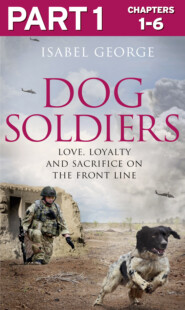По всем вопросам обращайтесь на: info@litportal.ru
(©) 2003-2024.
✖
Warrior: The true story of the real war horse
Настройки чтения
Размер шрифта
Высота строк
Поля
As the Special Service officer of the British Expeditionary Force, Seely was attached to the Headquarters. By the time he arrived with Warrior the HQ had already moved 20 miles closer to Paris due to the German advance. Warrior had no time to acclimatise to the fear, stink and commotion of war – the white heat from a bursting shell, the violence, the noise and the smell of blood. He had to hit the ground running. Riding through the small French villages gathering and sharing information with the local people, Seely and his steed dodged the almost constant shellfire, but Warrior never shied away. On one occasion a shell hit a stable building directly ahead of them, sending a plume of fire into the sky. Later, Seely proudly told anyone who would listen how his horse had the uncanny ability to stall fear – he felt it, but did not show it. Many other horses would have run at that point, but not Warrior.
The experience of war had been a sudden one for Warrior. He had left the green and pleasant land of home and found himself in a place torn apart by fire and explosions. Everything a horse feared was there and it was inescapable. As Seely and Warrior joined the British Expeditionary Force’s advance on the Marne, their main enemy was exhaustion. In the space of just a few weeks Warrior had grown up. He was no longer a six-year-old green to the ways of life and war; he was a survivor in a place where death was strewn all around.
The swift advance of the French Army had cut off a section of the Germanadvance and their exhausted men were surrendering on all sides. Warrior, with Seely on his back, took a path through it all and on to La Ferté-sous-Jouarre. Suddenly, Warrior and a group of other horses from the Expeditionary Force came to a halt just as a shell landed alongside them, blowing all around it into the air. Screams erupted from the stricken and bloodied, but out of the fire and mayhem stepped Warrior. As Seely gathered a group and ran ahead to the nearest village, the German machine guns rallied. All were killed except Seely. Warrior stood just a few hundred yards away.
Seely kissed Warrior on the nose. ‘If you are missing home, my Warrior, you should know that I am missing it, too. This hell is so far removed from our heaven at home, and I’m sorry I can’t give you a better shelter than this.’ Warrior did as he always did when his master spoke so softly to him; he nuzzled his cheek. There was a moment of thankfulness between the man and his horse for the fact that, by some miracle, they had survived the onslaught. Exhausted and covered in dirt and debris, Warrior took his rest. It was not for the war horse to know what would happen next, but Seely was aware that if there was any silence on the fields of Flanders that night it would be the calm before a storm. There was already talk of the hostilities building at Ypres, and few would be spared.
The fighting was desperate. The Allied forces faced overwhelming numbers and often superior artillery along the front line, and Warrior’s refusal to acknowledge fear was infectious. Every fighting man from the officer at General Headquarters to the Tommy in the trenches knew that if they slackened their grip on the enemy they would fail to hold the Channel ports and ultimately England could be lost. Seely went to report on activity at the Front only to find that it was being held by the brave survivors of an Indian contingent who refused to give in to the barrage of rifle and machine-gun fire. Warrior’s legs sank into the mud that had been stirred up in the wet gloom. He kept looking around warily. He had mastered his fear of fire and shells, but he still maintained a wise respect for rifle fire. He didn’t shy away or bolt, but there was unease in air. When Warrior suffered a bout of internal cramp and had to be taken back to GHQ at St-Omer, Seely breathed a sigh of relief. It seemed the unease was not unfounded – the horse Seely rode to the same spot the next day came under attack and was seriously wounded.
The informal armistice of Christmas 1914 brought a kind of peace that was welcomed by both sides. Seely heard later that soldiers from the Allied and German trenches had come together to play a game of football in No Man’s Land on Christmas Day. At the same time Seely had stood and looked at the hill above the town where the Expeditionary Force was stationed and thought of home. He had taken Warrior by the bridle and whispered his plan: ‘See that hill? That could be the Mottistone Downs, and for today it will be all ours. Come on, let’s go!’ The two galloped up the hill, taking a rare chance to ride as they would have done at home.
One of Warrior’s favourite games was racing the aeroplanes as they took off from the aerodrome. He wasn’t fazed by the noise of a plane’s engine, as perhaps he would have been in the old days. He was used to loud, strange and terrifying sounds and remained unmoved by the raw blast of the aircrafts as they reached for the sky. Racing the planes was the nearest thing to a game that he had enjoyed on these shores, and there was no rifle fire to dodge, no shellfire to challenge his nerves and the smell of blood was blasted from his nostrils by the clean, cold air.
‘Three cheers for old Warrior!’ (#u92e01a94-60f2-5c2f-ae11-c65e3d9fd369)
As the New Year rang in, Lord Kitchener requested Seely’s presence at the War Office in London. But Seely did not travel alone. In a gesture of respect for him and his war horse, Warrior was granted a pass home, too. According to Seely in his book Warrior: The Amazing Story of a Real War Horse, Sir John French – Commander in Chief of the British Expeditionary Forces – allowed the horse special passage and went as far as to say: ‘I owe much to your young horse … As long as I am Commander in Chief, wherever you go, he shall go.’
Warrior travelled back home to Mottistone to visit his mother, Cinderella. Seely went to the War Office where he received his orders for the next phase of the war – he was to command the Canadian Cavalry, which comprised all the men they could muster from the bravest and best of their cavalry regiments: Lord Strathcona’s Horse, the Fort Garry Horse, the Royal Canadian Dragoons and the Royal Canadian Horse Artillery. Kitchener shared the news that the Allies had experienced the first chlorine gas attack of the war during the Second Battle of Ypres and reinforcements were now urgently needed in the trenches. Seely and Warrior were to join the Canadians right away while they were training on Salisbury Plain, to help prepare them for Flanders.
General Seely was well respected by the Canadians, but his horse was respected even more. Warrior was immediately given the honour of regimental mascot, and whenever he appeared the men would shout, ‘Here comes Warrior!’ patting his flanks and cheering as he proudly trotted by. The men loved their horses and they were proud of the fine Canadian stock they had brought with them, so perhaps more than anyone else they understood Seely’s bond with Warrior. This made the generals’s first order to his men all the harder to deliver.
In the early months of the war it was the cavalry regiments that suffered the heaviest losses. The cavalry charge seen near Mons was such a tactical disaster that it could have been the last of the war. Waves of galloping horses ridden by men lunging swords were cut down at a distance by the relentless stutter of the German machine guns. The horses made easy targets and carnage was all that was achieved. Suddenly, the cavalry – regarded as the elite of the British Army – looked out of place, a throwback from a bygone military era. Modern trench warfare, with its barbed wire and advanced artillery, had changed the face of the fighting, and that is why, in February 1915, Seely had to ask his Canadian Cavalry soldiers to go to war without their horses.
As the men boarded the troopship at Southampton, Seely escorted Warrior onboard and eased him into a corridor where there was space enough to fit in next to him for the night crossing. It was a rough passage, and Seely was pleased that he could talk Warrior through it till dawn and offer him titbits of corn to keep his spirits up. It was 6 a.m. by the time the ship docked in Boulogne and the men could gather their kitbags ready to disembark. Several looked sick and were eager to plant their feet on dry land, but it was the General and Warrior who were the first down the gangway, positioning themselves so they could greet every man as they came ashore. There was little chatter as the men readied themselves and their belongings to move on to the next stage of their journey, but suddenly a shout went out: ‘Three cheers for Warrior!’ His rider must have felt the horse’s body rise with pride and his head lift to acknowledge the cheering of his name. It was nothing new for Jack Seely to hear his horse praised in this way. After all, Warrior was a remarkable and lovable horse, as his owner knew only too well.
Вы ознакомились с фрагментом книги.
Приобретайте полный текст книги у нашего партнера:
Приобретайте полный текст книги у нашего партнера:











